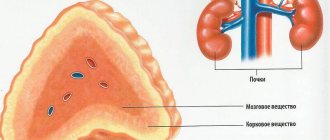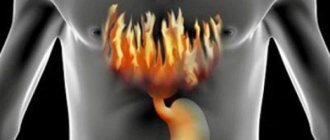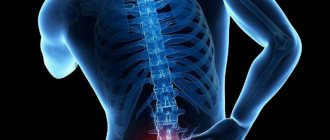Causes
The main reason due to which vertebrobasilar insufficiency develops is stenosis of the main arteries, impaired microcirculation and hemostasis, and microangiopathy. The condition of the extracranial parts of the vertebral arteries worsens.
More often, stenosis appears in the area of the artery at the entrance to the bone canal or directly to the site of formation of the main artery.
Sometimes a violation of cervical circulation occurs due to extravasal compression of the arteries passing through the vertebrae. Stenosis is rarely localized more proximally - in the area of the innominate or subclavian arteries.
Causes of atherosclerosis
Blood flows poorly through the arteries as a result of atherosclerotic lesions, especially:
- the first segment, it is located in the area where the artery begins and enters the canal of the processes of the C5 and C6 vertebrae;
- the fourth segment, located between the zone where the dura mater of the brain perforates and the confluence with the vertebral artery that is located at the beginning of the base of the artery.
It is important to know. These areas are affected against the background of the special geometry of the vessels of the cervical spine, which predisposes to turbulent blood flow and injury to the endothelium in some places.
Vessels are affected by atherosclerotic stenoses, as well as abnormalities in the structure of the vascular bed in newborns.
Which specialist can you consult about the treatment of this syndrome?
If you notice symptoms of vertebrobasilar arterial system syndrome, you should first contact your primary care physician, who will make a preliminary diagnosis and prescribe a series of tests to clarify it. After receiving the test results, a consultation with a neurologist will follow; it is he who will refer the patient for a diagnostic examination. It will include duplex scanning of the precerebral arteries and transcranial Doppler ultrasound of the cerebral arteries.
In our country there are leading specialists involved in the treatment of such syndromes of the arterial system:
- Gusev E.I. – Doctor of Medical Sciences, Academician of the Russian Academy of Medical Sciences, Professor, Head of the Department of the Russian State Medical University.
- Konovalov A.N. – Director of the Research Institute of Neurosurgery named after. Burdenko N. N.
Abroad, there are similar clinics in Italy and the USA.
Other causes of VBI
The functional functioning of the brain is also impaired due to:
- Microangiopathies Against the background of underlying diseases: diabetes mellitus or arterial hypertension, VBI begins to develop due to damage to small cerebral arteries.
- Infringement of the vertebral arteries The vertebrae of the cervical spine change with spondylosis, osteochondrosis, the formation of large osteophytes and the vessels are affected by compression. Acute compression of the vessel is often noted when turning the head, which reduces blood circulation.
- Extravasal compression of the artery under the clavicle In osteochondrosis, the hypertrophied scalene muscle and altered transverse cervical processes of the vertebrae affect the vessel.
- Acute injury As a result of transport (whiplash-like), iatrogenic (obtained during manual therapy) injuries, sudden movements during gymnastics, cervical circulation is disrupted.
- Inflammation of the vessel wall During arteritis, a defect forms on the vessel wall, then the arteries become dissected: main or vertebral
- Antiphospholipid syndrome It manifests itself with impaired vascular patency and increased formation of blood clots in young people and children.
Cerebral ischemia with VBI
Cerebral ischemia with VBI appears against the background of VBI as a result of additional factors in which:
- properties change, microcirculation is disrupted and the formation of blood clots increases;
- cardiogenic embolism is detected;
- due to a loose thrombus, several small arterio-arterial embolisms occur on the wall;
- a blood clot forms on the wall.
Due to the forced stay of the head in an uncomfortable position for a long time, especially in the presence of osteochondrosis, thrombosis increases.
According to studies, with VBI, changes occur in brain tissue: the occipital lobe cortex, cerebellum, brain stem, and pons.
Important. The variety of causes of VBI in a child or adult requires a thorough search for them in each individual case.
Is a differential diagnosis possible for this syndrome?
It turns out that when diagnosing vertebrobasilar arterial system syndrome, the doctor can differentiate it into several. That is, the main disease (in our case, this is the described syndrome) is also mixed with an additional one. So, our disease is accompanied by one of the following:
- Benign paroxysmal positional vertigo (the head may feel dizzy when changing its position or sharply bending in different directions).
- Multiple sclerosis of auditory impairment (without auditory abnormalities, but with longer-lasting dizziness).
- Vestibular neuronitis.
- Acute labyrinthitis.
- Meniere's disease (there is a feeling of constant dizziness, but there are no symptoms of vascular diseases).
- Acoustic neuroma.
- Demyelinating diseases of the brain.
- Normal pressure hydrocephalus.
- Anxiety, depressive disorders and other emotional disorders (accompanied by lightheadedness, nausea, motion sickness).
Please note that a qualified specialist prescribes treatment only if a final diagnosis is established.
Constant signs
Persistent symptoms tend to increase with the progression of the disease and provoke several ischemic attacks, which ends in vertebrobasilar stroke in children or adults.
Persistent symptoms of VBI are recognized by the presence of:
- acute pain in the back of the head;
- weakness and fatigue;
- paroxysmal dizziness and fainting;
- nausea, discomfort in the throat;
- ringing in the ears and hearing loss;
- weakening of memory and attention;
- decreased vision, blurred images, “bright spots” before the eyes, diplopia;
- tachycardia and irritability;
- heat in the head, face and hands;
- increased sweating.
Symptoms of the disease
Vertebrobasilar insufficiency often manifests itself with several syndromes and symptoms. It is not always possible to identify the leading signs. Malfunctions in the functioning of the circulatory system in the VBB zone provoke impaired motor function and sensitivity, hemianopia (blindness in half of the visual field), cortical blindness - complete loss of vision caused by damage to the brain structures in the occipital part of the skull. Treatment is necessary if symptoms occur:
- Ataxia, abnormal gait. A disorder of motor function due to a lack of coordination during muscle contraction.
- Dizziness, disturbances of consciousness.
- Impaired synchrony in eye movements.
- Nystagmus is frequent involuntary movement of the pupils.
- Dysarthria is a disorder of speech function due to impaired innervation of the elements of the speech apparatus.
- Horner's syndrome. Symptoms appear mainly on the face on the side of the brain tissue lesion. Main manifestations: ptosis (drooping of the eyelid due to impaired muscle innervation), miosis (reduction in pupil diameter), weak pupillary reaction to light, unilateral hyperemia of the facial skin.
- Auditory dysfunction.
Sometimes agnosia (impaired auditory, visual, tactile perception while maintaining consciousness), aphasia (loss of speech function partially or completely), disorientation in time, place, situation is added to the listed symptoms. VBI can manifest as a lacunar stroke with symptoms: hemiparesis (unilateral partial paralysis), hemihypesthesia (unilateral loss of sensation), hemiataxia (motor dysfunction on one side of the body).
The chronic form of the disease manifests itself identically to dyscirculatory encephalopathy with vestibulo-atactic syndrome. It manifests itself as dizziness, flashing of foreign objects (“flies”, spots) before the eyes, abnormal gait, impaired motor coordination and nausea. Dizziness is a characteristic sign of a pathological condition.
With vertebrobasilar insufficiency, paroxysmal and permanent symptoms are distinguished. In the first case, symptoms appear during an attack and disappear after its completion, in the second, they persist in the intervals between attacks. Venous dysfunction in the carotid and vertebrobasilar systems is manifested by tinnitus. The patient has symptoms: headache, impaired motor skills and sensitivity, numbness of the limbs.
The symptoms of VBI have much in common with signs of other diseases, for example, vertebral artery syndrome, ENT diseases, and psychological disorders, which makes diagnosis much more difficult.
In medicine, all symptoms of vertebrobasilar insufficiency are divided into permanent (chronic) and temporary. The latter are associated with transient ischemic attacks (TIA), which can conditionally be called temporary exacerbations of the condition.
REFERENCE! If the TIA continues for more than a day, an ischemic stroke is diagnosed.
Chronic symptoms are present all the time, but become more pronounced as the disease progresses.
The main symptom of VBI is dizziness. It is usually not caused by any external factors (changes in pressure, temperature) and occurs suddenly. The duration of the attack can vary from several minutes to several hours. In severe cases of the disease, nausea and vomiting with dizziness, sweating, changes in heart rate, and pressure surges may be present. Sometimes dizziness leads to loss of consciousness.
Another classic symptom of VBI is headache, which is often localized in the back of the head. It can be dull or pulsating.
Other persistent symptoms of vertebrobasilar insufficiency:
- Perception disorders of the visual analyzer. With VBI, visual acuity often decreases, “spots”, “sand”, fog appear before the eyes, loss of visual fields, double images, and blurred contours.
- Impaired auditory perception manifests itself in the form of noise, ringing, buzzing in the ears, and hearing impairment. As the disease progresses, tinnitus becomes constant. There is often a lack of hearing on one side.
- Absent-mindedness, memory loss, difficulty concentrating.
- Poor coordination of movements, lack of balance.
- Chronic fatigue syndrome, increased fatigue, weakness. A person finds it difficult to work; after 1-2 hours he feels very tired, drowsy and lacks strength.
- Emotional instability: sudden mood swings, irritability, moodiness.
- Feeling of heat and increased sweating, tachycardia.
- Soreness, sensation of a foreign object in the throat, slight hoarseness.
- Fainting.
In the later stages of the disease, attacks of dizziness become more frequent, intensified by prolonged uncomfortable positioning of the head, with sudden turns of the head, speech and swallowing disorders, sudden falls and various types of ischemic strokes.
Recognizing the symptoms of pathology in children
Vertebro-basilar insufficiency syndrome affects children from 3 years of age due to congenital anomalies of the vertebral or basilar arteries and trauma. Parents should be on the lookout for symptoms indicating the following:
- lethargy and fatigue;
- causeless restlessness with frequent crying;
- the appearance of postural disorders;
- frequent daytime naps;
- inability to stay in a stuffy room;
- attacks of dizziness, often with fainting.
Dizziness occurs because the vestibular system is sensitive to a lack of blood supply to the brain.
Clinical picture [edit | edit code ]
Symptoms of vertebrobasilar insufficiency are caused by dysfunction of the parts of the brain supplied by the vertebral and basilar arteries. The main clinical signs of VBI include:
Dizziness [edit | edit code]
Occurs when there is a disruption in the blood supply to the vestibular apparatus and is one of the most common manifestations of VBI. Dizziness usually occurs suddenly and lasts from a few minutes to hours. In severe cases, it is accompanied by nausea, vomiting, sweating, changes in heart rate and blood pressure. Sometimes it can lead to fainting.
Headache[edit | edit code]
Usually localized in the back of the head. May be pulsating or dull.
Visual impairment [edit | edit code]
VBN is characterized by both long-term and short-term vision loss, spots or darkening before the eyes, and loss of visual fields. Sometimes diplopia occurs, less often - various oculomotor disorders.
Sensorineural hearing loss [edit | edit code]
This condition is characterized by a sharp unilateral hearing loss or the appearance of noise of different timbres in the ears.
Fainting [edit | edit code]
Occurs when there is a temporary disruption of cerebral blood flow.
Asthenic syndrome [edit | edit code]
It manifests itself as loss of interest in the environment, weakness, lethargy, increased fatigue, sudden mood swings, irritability, and tearfulness. Vertebro-basilar insufficiency tends to progress rapidly. In later stages of the disease, serious complications may develop: speech and swallowing disorders, drop attacks and ischemic strokes of varying severity.
Diagnosis confirmation
Diagnosis of VBI is aimed at a neurological examination to find out the underlying pathology in which it develops. Due to the variety of manifestations and the presence of similar signs in other diseases, the diagnosis of VBI becomes quite complex. To confirm circulatory failure, functional and de Klein tests are used. To confirm the diagnosis, turn the head in different directions and throw it back.
Perform hardware diagnostics:
- transcranial dopplerography, which evaluates the state of cerebral blood circulation;
- magnetic resonance angiography. It helps to examine the affected vessels in the vertebrobasilar region, to find out their length, extent and nature;
- computed spiral angiography. It is prescribed to visualize the lumen in the vessels and their walls;
- digital subtraction arteriography, through which the lumen in the vessels is visualized;
- rheoencephalography - to study cerebral blood circulation.
Diagnosis is carried out using neuropsychological tests to assess the patient's condition.
Use of medications
VBI treatment is performed:
- Vasodilators (drugs that dilate blood vessels) Treatment is prescribed for the purpose of vascular patency in osteochondrosis, spondylosis, spondylolisthesis in the spring and autumn seasons. Small doses are gradually increased. If the effect of one type of drug is insignificant, additional similar drugs are prescribed. Treatment begins with diuretics, ACE inhibitors (Captopril, Enelapril), calcium channel blockers (Amlodipine, Felodipine), beta blockers (Antenol, Metopropol, Bisopropol). If the pressure does not decrease, treatment is carried out with complex therapy (diuretic + ACE inhibitor, diuretic + b-blocker, beta blocker + calcium channel blocker).
- Antiplatelet agents to reduce blood clotting These drugs prevent the formation of blood clots. Treatment is carried out with acetylsalicylic acid (aspirin). It should not be taken on an empty stomach or against the background of diseases of the digestive system. Clopidogrel, Dipyridamole or Ticlopidine may be prescribed instead of aspirin. The optimal therapeutic dose of aspirin is 0.5-1.0 mg/kg/day.
- Metabolic and nootropic drugs Treatment with these drugs (Glycine, Piracetam, Actovegin, Cerebrolysin, Seamax, Nicergoline) improves the functional functioning of the brain.
Drugs to eliminate blood pressure and other symptoms are prescribed individually. Folk remedies are prescribed in general complex therapy. The drug Bilobil from the Gingko biloba plant is effective. Treatment with berries rich in vitamin C: cranberries, viburnum, sea buckthorn, lemons, oranges, kiwi, currants, and garlic thins the blood. Treatment with horse chestnut tincture reduces blood clotting.
Hypertension sufferers will be helped by folk remedies from the following collections:
- Steam lemon balm (20 g), corn silk (40 g) with boiling water and add lemon juice (1 lemon). After an hour, take 0.5 tbsp. half an hour before meals. After a week's course, take the same break.
- Make a mixture of rue, corn silk, mint and valerian in equal parts by weight. Place in a jar for storage. Pour boiling water (1 tbsp.) – 1 tbsp. l. collection and let it brew for 30 minutes. Before meals, drink a third of a glass for a course of 30 days.
Surgical interventions
In severe cases (with osteochondrosis, spondylosis), insufficient blood circulation (with a reduction in the diameter of the arteries) due to compression, stenosis, spasms is eliminated by operations:
- microdisectomy, which stabilizes the spine in the cervical region with osteochondrosis;
- endarterectomy removes atherosclerotic plaques from the lining of the arteries;
- laser reconstruction of intervertebral discs for osteochondrosis;
- angioplasty - insertion of a special stent to widen the vessel and maintain blood flow to the brain.
How to treat vertebrobasilar arterial system syndrome
As already mentioned, the doctor prescribes treatment only after the diagnosis has been clarified, and for this you need to undergo a full clinical examination. Experts say that there are several methods for treating this syndrome.
The first method: taking medications. The most effective ones include:
- angioprotectors (Troxerutin, Troxevasin);
- analgesics (Nalbufin, Analgin);
- nootropics (Piracetam, Nootropil, Lucetam);
- antiplatelet agents (Clopidogrel, Agregal).
It should be clarified that the effectiveness of such treatment can be noticed after three months of using medications prescribed by a doctor.
The second method is physiotherapy and the use of therapeutic exercises.
Combination treatment is also often used, including a combination of the two methods described above. This combination may not always be the optimal treatment option for this syndrome. It should be used as soon as the patient feels the effects of the primary symptoms of vertebrobasilar arterial system syndrome. And for older people over the age of 75, increased doses of medications are generally prohibited.
Conservative treatment includes drug therapy, that is, taking the medications listed above, including vasodilators that reduce blood clotting and improve the functions of parts of the brain.
Surgical intervention is possible only in certain cases when it is necessary to eliminate circulatory failure due to a decrease in the diameter of the vertebral artery, which occurred as a result of spasm, stenosis, or compression. Such operations can be performed using a laser (reconstruction of intervertebral discs) or by angioplasty of the vertebral artery (in this case, a special stent is installed, with the help of which further functioning of the operated artery is possible).











